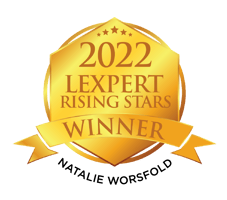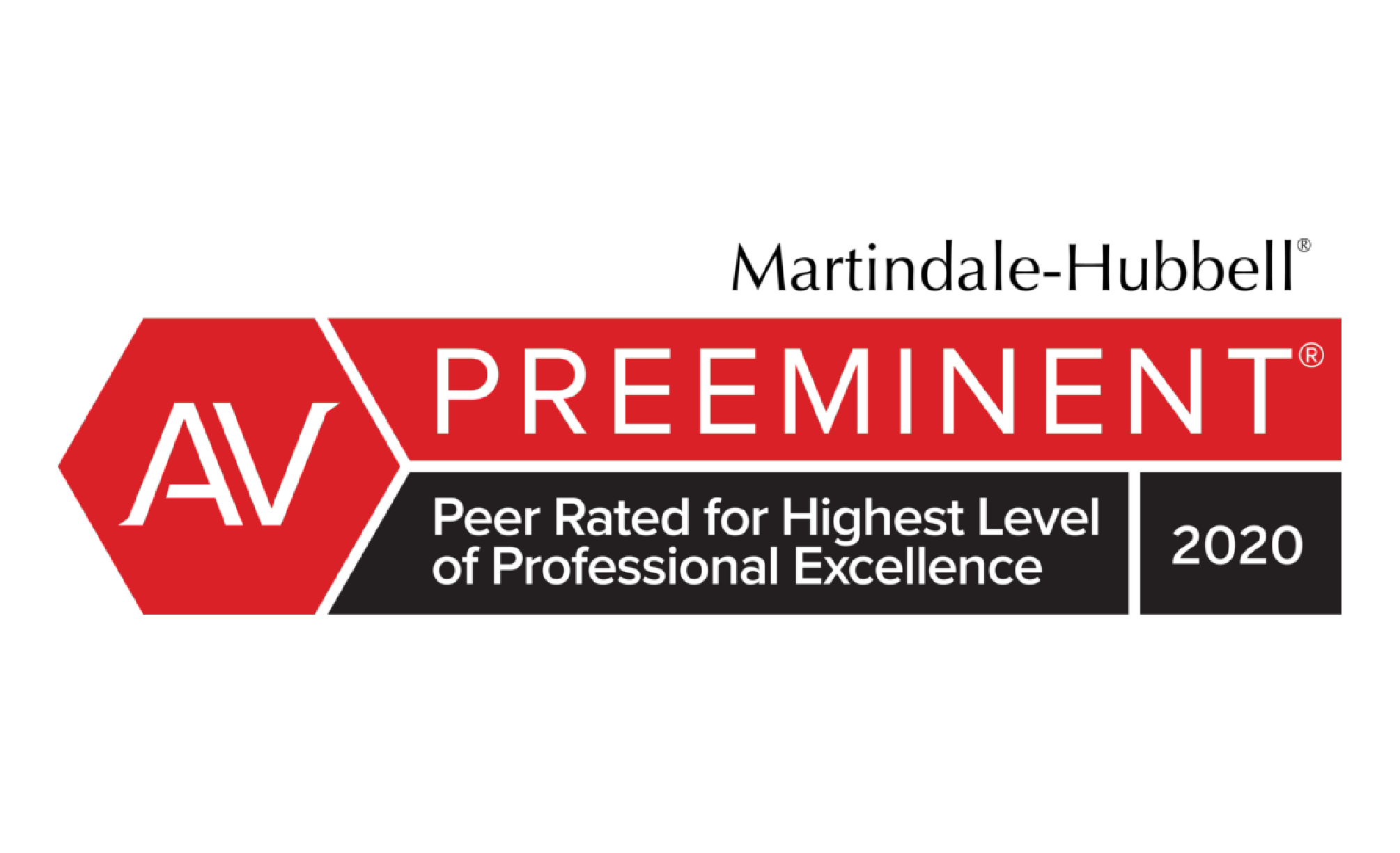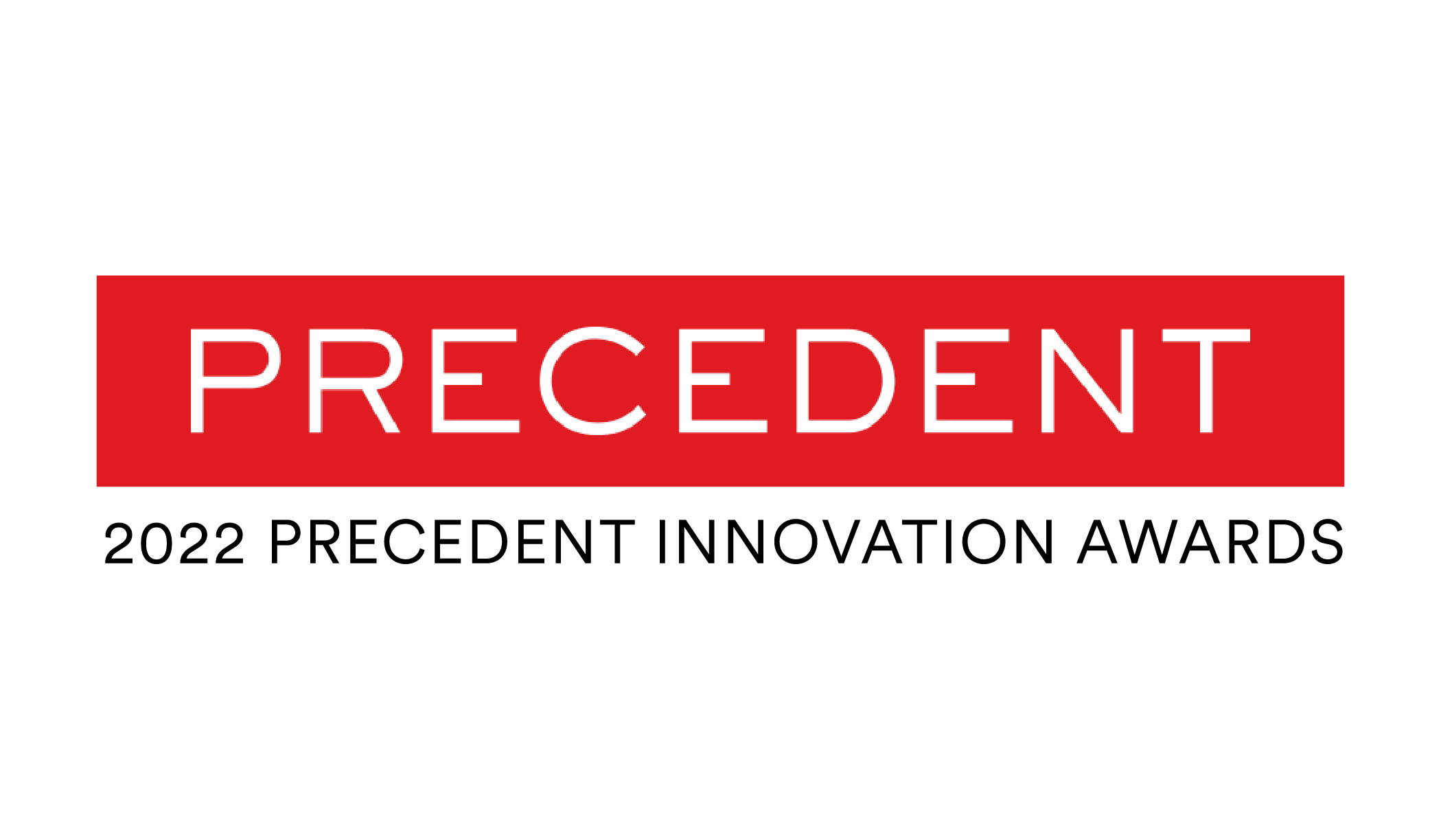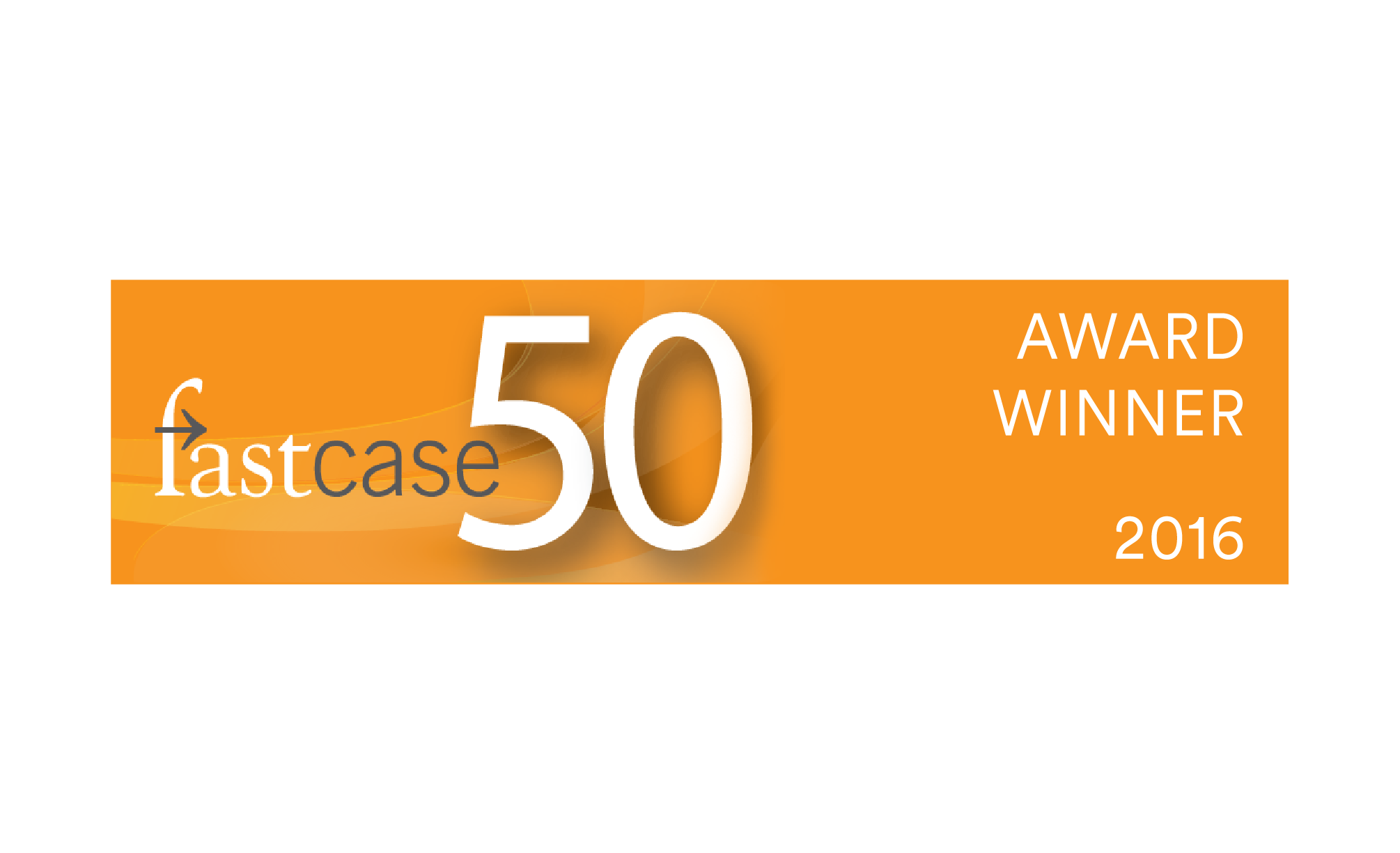
Peter Aprile and Natalie Worsfold interview Samuel Witherspoon, founder, and CEO of Miralaw. Peter, Natalie, and Sam discuss Miralaw’s new product offering, Thistoo, a consumer-focused family analytics platform designed to guide users through the separation and divorce process. The group dives deep into Sam’s experience as a legal technologist and entrepreneur, including the hurdles, competition, and how Thistoo is trying to help people gain access to justice.

Guest
Samuel Witherspoon
Samuel’s background as an engineer and lawyer has enabled him to develop sophisticated critical thinking skills across many disciplines. After working with a prestigious judge at the Federal Court of Canada he worked as an IP lawyer before leaving lucrative private practice to pursue Miralaw. Samuel’s passion and understanding of the law have helped him identify unique analytical applications for Miralaw’s product.
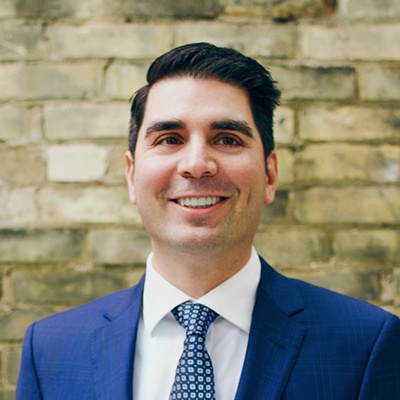
Peter Aprile is a senior lawyer specializing in tax dispute resolution and litigation. His vision as Counter’s founder and his everyday role at the firm are one and the same: to be an agent of change, uncovering opportunities and developing strategies that achieve more than anyone expected. A creative thinker, Peter studies problems from all different angles to find what others have missed. He’s also convinced that he likes winning more than most people.
Different people describe Peter in different ways. At the CRA and the federal Department of Justice, the word relentless comes up quite a lot. Admittedly, so does the word a**hole – but it’s often said with a certain grudging respect, if not affection. Peter’s clients call him a saint. Well, some of them, anyway. His colleagues describe him as empowering and harddriving, but fair. Peter’s friends call him loyal. His wife describes him as a lot to deal with, but worth it. Peter encourages his young daughter and son to call him “The Big Homie,” though with limited success. His mother describes him with the single word mischievous – before going on to complain that he should call more.

Natalie is a tax lawyer who represents individual taxpayers and owner-managed businesses in disputes with the Canada Revenue Agency (CRA). She also successfully challenges CRA decisions denying taxpayer relief and helps facilitate applications under the Voluntary Disclosures Program.
But what you really need to know about Natalie is that she’s a tax litigator with heart. When she takes a case, it’s not out of technical interest – it’s because she cares. And if she believes the government has got something wrong, she won’t stop until it’s been put right. She’s fierce.
Natalie is the co-architect behind many of Counter’s process workflows, software and data analytics systems, as well as our comprehensive knowledgebase (loving named Hank). And when it comes to preparing cases, she’s Counter’s secret weapon – happiest when elbow-deep in evidence, meticulously building creative solutions to seemingly impossible problems. Because the fact is Natalie sees things that other people don’t.
Natalie’s family and friends describe her as loyal, selfless, understanding and fun. They also mention stubborn. To her Counter colleagues she’s a combination of stellar brainpower and contagious enthusiasm who elevates the game of everyone around her.
People
Practices
- Miralaw
- PCK IP
Tech, Tools & More
[music]
Peter Aprile: [00:06] Hi, and welcome to Building NewLaw. It’s a podcast hosted by me, Peter Aprile, and my colleague Natalie Worsfold. In each episode, we interview lawyers, legal technologists, and other like‑minded people at the forefront of new law.
[00:19] We hope that the podcast connects the new law community and helps us all learn more about the approaches that are changing the way that we practice law. Enjoy the show.
[music]
Sponsor: [00:31] The Building NewLaw podcast is supported by Counter Tax Lawyers, a new type of tax controversy and litigation law firm. To learn more about Counter, go to countertax.ca.
[music]
Natalie Worsfold: [00:42] We’re talking today with Samuel Witherspoon. If you don’t know Sam, you should, because he is awesome.
Peter: [00:54] Sam is an engineer turned lawyer turned entrepreneur. At the age of 30, Sam is my hero. Sam has already shown himself as an agent of change in new law and he has been featured in the Canadian Bar Association’s “Do Law Differently” publication, which marks Sam as a new law pioneer.
Natalie: [01:10] We’re talking to Sam about his company, Miralaw, and his project Thistoo, which is an online, do‑it‑yourself family law divorce and separation tool that uses artificial intelligence to predict litigation outcomes.
Peter: [01:21] Thistoo is a wonderful product that we think is really going to cause some change and help a lot of people who aren’t receiving legal services in the family law market have access to justice. Here’s our interview with Sam.
[music]
Peter: [01:32] What is Miralaw?
Samuel Witherspoon: [01:33] Miralaw started about two years ago. We started off trying to get access to underlying court data, so pleadings, that type of thing. Once we realized that the government was going to be exceptionally slow, we pivoted away and said, “What can we do with the publicly available data sets that are out there?”
[01:57] That’s basically how we landed in the area we are in now, which is family law analytics targeted at consumers. Our product is called Thistoo.
Peter: [02:05] What is Thistoo exactly?
Samuel: [02:06] Thistoo is a consumer‑focused family analytics platform. When people find themselves in a family law situation, not many of them can afford legal assistance at the moment. We provide a much more comprehensive form of legal information for the average consumer.
[02:24] Then, on top of that, we have lots of information on the site about the process. Basically, we support the DIY divorce industry.
Natalie: [02:32] What made you choose family law?
Samuel: [02:34] Family law, in general, is a massively underserved market. It’s very difficult to go a week without finding a story in CBC, “Toronto Star,” “Ottawa Citizens,” somewhere that’s not decrying this crisis in the family courts. No solution has come forward.
[02:51] The reality is we were actually looking at this last week. The Toronto Star wrote a piece on how family legal fees have gone up 40 percent in the last year.
Peter: [03:02] How is that even possible?
Samuel: [03:03] They called the five largest family law firms in Toronto, and asked them why. Four refused to comment, and one said, “Administrative overhead”.
Peter: [03:14] Wow. That article will be in the show notes.
Samuel: [03:17] I’m willing to bet that none of their staff got a 40 percent raise, that the rent didn’t go up by 40 percent, and the cost of paper did not increase by 40 percent. I really don’t understand where the administrative overhead came from in a year.
Peter: [03:31] In terms of the dollars in the market?
Samuel: [03:34] Right. About 1.1 million divorces annually in North America. The average cost across those is about $2,000 a divorce. It’s about a $200 billion a year industry. That might seem like a staggering number, but I think that’s the reality.
[03:50] The other crazy part of all of that is there’s a significant number of self‑represented participants in the process, who either initially get a lawyer, but can’t afford to see it through with a lawyer, or do the process start to finish, or never get divorced to begin with, or never even separate because they don’t fully understand what their rights and obligations are.
[04:12] The Law Society released a report. It said California’s around 80 percent. Ontario’s between 50 and 70. There is a crisis.
Peter: [04:18] These are people with no support, no access, no nothing?
Samuel: [04:22] Access varies. Odds are, most of them have, at some stage, got a couple hours from a lawyer, but it’s unaffordable. My wife and I are not getting divorced, but she’s a veterinarian. I’m working at a startup, so take this with a grain of salt.
[04:36] We’re a financially stable household, and it would be unaffordable for us to go and get a divorce right now. It’s punitive. We’re shortly going to be relying on partnerships to open our platform up for free to low income families.
[04:50] Legal aid cuts people off basically well below the poverty line already. We’re going to start giving it away to a much larger group of the population, not because we have to, but because it’s the right thing to do in these types of circumstances.
Peter: [05:02] That’s the conversation that led to you coming onto this podcast. That’s a big thing about what you guys want to do. One of the things that really struck me about our first conversation was it isn’t just talk about trying to do better, or trying to give greater access. You guys are actually coming up with things like this, in order to walk the walk.
Samuel: [05:20] We’re living it.
Peter: [05:22] If I am going through a divorce or a separation, I go to the website, what happens? What are my options?
Samuel: [05:27] There are really four pillars that we’ve built this around. Plans, organize, agree, and resolve. Under plan, you can do things for free, like calculate your spousal and child support. We have a basic asset division calculator. That’s built on observed data that we historically have watched come out of the courts.
[05:48] We also offer a case comparison feature. That gives people, in essence, an automatically generated report. We look at the 58,000 family law cases, show them the three nearest matches in terms of outcome. In organize, help them put all of their documents in order, identify what documents they need to have in order.
[06:08] In agree, we took a whole bunch of separation agreements, paid a bunch of lawyers to draft them, digested them, and built what we felt was the best mathematical hybrid of a separation agreement. Then took it back out, got more lawyers to look at it, got it blessed by some lawyers.
[06:23] Then we can automatically generate a very comprehensive separation agreement, and pull in a bunch of the information they’ve already provided us. In the resolve piece, we actually automatically populate all of the forms based on the information you’ve already given us, and show you what the process looks like, how to take it to court, what courthouse to take it to.
[06:43] All along the way, we refer people out to lawyers, where necessary. Basically, our core mission is we don’t want anyone litigating where they don’t absolutely need to. One of the easiest ways, we feel, to do that is to manage people’s expectations upfront, and show them the cost of litigation, compared to the return.
[07:01] It’s a very rare circumstance where someone actually litigates a family law matter, and ultimately sees a financial return of any sort on the cost to litigate.
Peter: [07:12] How do you quantify the cost to litigate?
Samuel: [07:14] It depends. Some cases will make reference to it. Other cases won’t. In the situation where it doesn’t make reference to it, we use an aggregate score that we’ve developed from other cases that we’ve observed.
Peter: [07:27] You’re pulling as much objective data as you possibly can from the case law and other sources, and then making slight assumptions, as need be?
Samuel: [07:34] Absolutely. We interpolate in an intelligent way.
Natalie: [07:38] That’s a better guess than most lawyers can give, I’d imagine.
Samuel: [07:40] Probably. We look at a lot more information. A lot of lawyers, they have their intuition, and they have their own personal experience. That informs a lot of their opinion. In reality, is more information always better? My opinion is yes. I’m not sure everyone would agree.
Natalie: [07:56] I absolutely agree. We have clients come through the door. The first thing they want to know is, “How much is this going to cost, and where am I going to be at the end of it?” It sounds like what your tool does is say, “Here’s where other people in your situation have ended up.”
Samuel: [08:09] Exactly.
Peter: [08:10] I guess the question becomes how do you do this from a technical standpoint?
Samuel: [08:13] What we do is a combination of different technologies. We leverage an area of technology called natural language processing. That’s really how we take our unstructured documents, and impose structure on them.
[08:27] When I say, “unstructured,” I mean computers don’t physically understand a sentence. You need to provide some sort of guidance as to what that sentence means, and you need to do it in an abstract enough way that it can be repeated over and over again, for the computer to continually execute upon.
[08:44] That’s what natural language processing lets us do, at a very high level. That structure then needs to be modeled. We use a statistical model called a Bayesian network. There’s no rocket science there. If anyone’s watched the movie, “Moneyball,” or read the book, it is the exact same model that he used.
[09:01] It lets us interpolate in the model. It lets us do really cool stuff, when we have an incomplete information set. It lets us very easily identify improbable fact situations. The secret sauce is really in the data extraction. That’s where the exciting stuff happens, from my perspective.
Peter: [09:17] It’s that underlying system that allows you to do case comparisons with the data that the user is inputting in the first instance?
Samuel: [09:25] Some of the case comparison leverages that model. The case comparison itself, we’re actually using a different statistical technique, called a nearest neighbor search. Basically, all you’re doing is you’re trying to find the best possible match, given all of these unique facts.
[09:40] It’s just basically a complex search, is really what we’re doing, in that respect. Before it hits that, there’s a validation layer that says, “Does this even make sense to begin with?”
Natalie: [09:50] I really like it as a complementary service to a lawyer. Getting that access to information and education, that’s a wonderful thing to have. My parents are going through a separation, and just trying to learn about the process is very overwhelming.
[10:02] You’ve done an excellent job of that hand‑holding you’re talking about. Having access to something that’s written in simple language, and is easy to understand, that’s what everybody needs.
Peter: [10:11] I’ll go a step further, and say, “How much do we do at our law firm to help our clients get everything to us in a format that we can use to get them on the right path?” A, this is a process that could help people who don’t otherwise have access get through the entire process.
[10:26] Or B, my god, if I could have more clients who are organized, and understand exactly what I need, and how I need it, and present it to me when walking in, I’d be a much happier lawyer, and be a lot more able to service those clients in the way that I want to service those clients, and deliver value where I want to, as opposed to...
Natalie: [10:43] Not have to have explain it, which is nice.
Peter: [10:46] All of a sudden, now you have a client that’s 80 percent there as they’ve walked through the door. What was the path leading up to what you’re doing now?
Samuel: [10:52] I clerked at the federal court for Justice Hughes. Had a phenomenal year, worked on a lot of really, really interesting pharmaceutical patent trials, had just a great experience at the federal court. The one black mark on that experience was dealing with their file system.
[11:10] That’s actually originally how some of this got started. After I worked at the federal court, I worked at Perry Currier for about five, six months. I had a great experience there. I loved working there, but my wife got a job far enough away that we were basically going to have to live in two separate houses.
[11:28] I moved with her. It wasn’t easy to quit, but it gave me the last little push I needed to start doing something on my own.
Peter: [11:35] Did you have anything when you left PCK?
Samuel: [11:38] I didn’t have anything.
Peter: [11:39] You could’ve become a sole practitioner or something like that?
Samuel: [11:41] I could have. Absolutely.
Peter: [11:43] That’s what most people would do. You didn’t do that?
Samuel: [11:45] I didn’t do that. I took about a month. I’d been stewing on the idea of, “Well, could I modernize the court records in some way? Could I get my way in there?” I sat in on a meeting where they’d thrown around this completely ridiculous figure to modernize the courts.
[12:01] They’d said something like $270 million. That really stuck with me. I was like, “Man, I think I could do that for like $3 million.” That’s what got the gears turning, was like, “Wow, someone wants to spend $270 million on a problem that just can’t conceivably be worth more than, like, 10? That’s a wicked margin.”
[12:19] I thought, “Hey, I’ll bid on that.” I was really naive. It quickly shifted away from, “Hey, I’ll bid on that,” to, “Hey, why don’t we structure it as a public/private partnership?” We got the same investors to participate that participated in the Teranet Land Registry in Ontario. That enabled us basically to build a proof of concept, and start lobbying, to a degree.
[12:42] Had a bunch of meetings, went down that path for about a year, and went to a Christmas party for James Moore in Toronto, and cornered his chief of staff, and was like, “Listen. Are you going to make a decision on this?”
[12:54] His response was, “We just did, like, a billion dollar deal with Boeing,” or some aerospace company. “We’ll do those deals any day of the week because they’re low risk. There’s not a chance for a startup to get any business from the government.”
[13:05] I heard him loud and clear. I basically had the Christmas break to figure out what I was going to do. I’d been watching the electronic document exchange stuff in Ontario, saw that it was changing. Basically, what we built was a court‑focused electronic document exchange.
[13:20] We basically reskinned, rebranded the product, launched it, and about a month later, canned it.
Natalie: [13:27] What I’m hearing from your story is you’re very good at identifying when something’s not working, and then making that pivot, and switching. Like you said, reskinning your product, and trying that. You waited, what was it, two months?
[13:38] Now you’re onto something new. Tell me about how do you know when to make that pivot?
Samuel: [13:42] It’s a good question. You should always be waking up at night thinking, “Man, I’m in the wrong place.” That’s how you stay hungry.
Peter: [13:50] What if you don’t go to sleep?
[13:53] [laughter]
Samuel: [13:53] That’s when. I was just going to say, there’s that uncomfortable feeling, and then there’s a really uncomfortable feeling. It’s the really uncomfortable feeling. The only way I can describe it is it’s like pornography. You know it when you see it. That’s the US Supreme Court definition.
[14:09] There’s one other way, which is if you talk to 20 or 30 lawyers, and they all just hang up the phone, or they’re like, “Why would I ever use this?” That’s probably a good indication. We’ve never come up against that.
[14:22] That’s actually what makes some of these really hard decisions. You get a nibble, and it’s hard to tell if that nibble’s the start of something big, or if it’s always just going to be that crappy nibble.
Natalie: [14:33] This, too, is marketed at consumers, rather than lawyers, though?
Samuel: [14:37] Yep.
Natalie: [14:36] Was that a deliberate choice?
Samuel: [14:39] Absolutely. That’s one of the few truly long, well‑thought out decisions I’ve probably ever made. It comes from dealing with a lot of lawyers. Selling to consumers is hard. Don’t take this any other way.
[14:53] At the same time, selling to lawyers, especially with technology, is a brutally long sales cycle.
Natalie: [15:00] Everybody that we’ve spoken to has said that exact thing. It’s like, “They are incredibly difficult to market to, incredibly difficult to persuade.” It surprises me.
Samuel: [15:08] One of the challenges is, with the traditional legal business model, efficiency is not incentivized in any way because a lot of firms operate on a billable hours still.
Natalie: [15:20] The change is not pervasive enough yet?
Samuel: [15:22] Yeah. If unbundled services was a more common occurrence in the legal profession, you better believe everyone would want to be able to charge $200 for something that cost them $10 to generate. Margin is not a real world, as far as I can tell.
[15:38] They know their margin on the billable hour, and that’s how they set their billable hour targets. That’s the unfortunate answer, is if I can save you time as a lawyer, I’ve just cost you billable hours.
Natalie: [15:49] Do you think we’ll see more and more products like this, that are aimed at, I guess, that intake side of efficiency, and making sure that the client is better educated, better prepared, and ready to get the legal side done?
Samuel: [16:02] It depends on who the predominant legal service provider is on the other end. If you’re talking corporate counsel, I don’t think there’s an intake product that anyone will ever – you should never said never – but it’s a really tough sell in that environment.
[16:17] The best story I heard was I was explaining to a very, very senior and well‑respected one day – I’m not mentioning his name on purpose – what we were trying to do originally. His comment to me was, “Well, the big firms are out.”
[16:32] I was like, “Why are the big firms out?” He’s like, “Because each one of them has a print shop the partners own that lives in the center of the firm that charges out. It’s a way for them to move profits out of the firm, into a corporation. That corporation kicks back to the partners.”
[16:46] I was like, “What do you mean? That exists?” He’s like, “Absolutely. That’s how the partners make some extra cash on the side.” I’m like, “They need cash on the side?”
[16:56] [laughter]
Samuel: [16:56] The fact that that exists, the Law Society may have cracked down on that recently. Just the very notion that you need a print shop to get a little more, that’s it right there. If I can charge .10, .12 cents a page to my client, why would I ever leave print?
Peter: [17:11] That just tells me that this change has to happen internally within these firms. I do think you’re seeing some of it. I guess the question is do you need to work in an environment where there is inefficiencies, or where there is some lacking, in order to do what you’re doing?
Samuel: [17:25] It certainly helps. If you have no expertise, and no experience in an area, you certainly start off further behind than someone who does. I don’t think that’s a reason to not go after it. Like the guys who created Uber, none of them were taxi drivers.
[17:40] They just observed the problem from the outside, and were like, “I think there’s a better way.”
Peter: [17:44] The guy that created Khan Academy was not a teacher.
Samuel: [17:46] There are tons of examples, very successful examples. The way we dismiss people who haven’t felt the pain, or haven’t experienced the problem, not being able to solve it, is fundamentally wrong. The other side of it that is, if you have experienced it, and if you are sitting there going, “This doesn’t work the way it is right now,” and you go along with it anyway, there’s some culpability.
[18:11] [laughter]
Natalie: [18:11] You were talking earlier about machine learning. There’s a big buzz around AI right now. Everybody seems to be talking about it. Who else do you see in the AI sphere that’s doing something interesting?
Samuel: [18:22] Tesla’s self driving car is really, really impressive. I’m blown away. Have you seen the two guys playing that fishing game that kids play while the car is driving on the freeway in San Francisco?
Peter: [18:32] No, I haven’t seen that.
Samuel: [18:34] It’s unbelievable. The car is actually driving itself, avoiding people merging in, keeping its distance. That’s a really impressive application of AI. Google, relatively recently, beat the world’s Go champion.
[18:45] That was really, really impressive, just because it’s a game that, theoretically, is mathematically much more complex than chess. Those are my two at the moment that are blowing me away.
Peter: [18:55] Hold on. It raises a question. You guys are a small company.
Samuel: [18:58] Oh yeah.
Peter: [19:00] We ask you about AI, and who’s doing interesting things. Tesla and Google comes up. They’re not small companies. What makes you think that what you’re doing with AI is going to be a certain level of quality, or a certain level of sophistication that a bigger player couldn’t do better than a small company like you?
Samuel: [19:19] We actually had a really entertaining investor pitch, where I pitched the investor, and at the end of it, he dismissed with me three or four words. It was, “You know IBM’s doing law now, right?” I was like, “Cool. See you, man. You’re not going to add value. Bye.” To answer your question...
Peter: [19:36] That’s what everybody’s going to be thinking. Most people who don’t look at your space are going to say, “Have you heard of this whole Watson thing? You might want to watch out for that.”
Samuel: [19:46] The honest answer is Watson’s been trying to solve medicine for 20 years now. It’s really good at “Jeopardy!”, unless you ask it what the capital of Canada is, and it’s not particularly good at medicine. The same is going to be true for law for a long time.
[20:03] It’s augmenting service. Is Watson going to be good at that? It probably is adequate at augmenting legal services. Why are we capable of competing with that? We’ve thought about the problem differently. Instead of looking for a general solution, we’ve found a really, really specific niche.
[20:21] We’ve said, “We’re going to be really good at this niche.” That’s a huge advantage. Google, IBM, all of those players, they’re trying to solve a general problem. The general problem is, “How do you create artificial intelligence that can answer any question, and solve any problem?”
[20:37] We didn’t start with that as our problem statement. Our problem statement was, “How do we provide valuable insight to a consumer in a niche area of the law?” It happens to be a very valuable area of the law. It happens to be the highest volume area of the law.
[20:51] Those were all intentional decisions. In reality, we have a much more focused purpose, and a much more focused objective. It lets us get there a lot of faster, and a lot sooner.
Peter: [21:02] There’s a very vocal response from some lawyers, that they feel threatened by all this. They feel like they’re going to be replaced. There’s a lot of fear out there. Do you guys think that what you’re doing is going to replace lawyers? Do you feel that you’re a threat?
Samuel: [21:17] I guess I’m going to address that two ways. If lawyers feel that they can be replaced by computers, they are, in essence, equating themselves to a line worker at a GM plant because they’re replaceable by technology.
[21:33] If your job is that repetitive, and that mundane, and boring, and simplistic, you probably should be replaced. The reality is, I don’t think good lawyers will ever be replaced. The people who move paper from A to B, they should have been replaced 15 years ago.
[21:50] The people who deliver value to their clients, they’ll never be replaced. The reason they’ll never be replaced is there’s a human element to all of this. Being able to talk to someone, being able to have a confidant, computers are really terrible at that. My answer is that.
Peter: [22:08] That’s how I look at it. I think about what we’re doing in our law firm. We’ve highly automated, I guess you would say, one specific submission. I told everybody here that we have this system now. Everybody cheered, because nobody wants to do that submission.
[22:24] The fear, I find almost comical because of what you just said. If you’re equating your job to something that can be replaced, you shouldn’t be doing it.
Samuel: [22:31] The other side of that accountants, Ernst & Young, Deloitte, PricewaterhouseCoopers, when SimpleTax or any of those came out, did their businesses disappear? I walked by a bunch of big buildings on my way here with those names on them.
[22:46] SimpleTax is still doing their job, and Deloitte’s still doing their job. They don’t go away. They’ve just found a different way to offer their service. Again, I don’t see them going anywhere any time soon.
Peter: [22:58] I think the Big Four are doing OK. A lot of hype around AI. Separate the hype from the reality.
Samuel: [23:05] It’s pretty complex to do that. The big companies, Google acquired DeepMind in the UK to be able to catch up to what everyone else is doing. Facebook is doing some honestly shocking stuff around image processing that probably most people aren’t aware of.
[23:22] Those guys are certainly doing awesome science, awesome work. It’s a lot of mathematics. In general, though, there is certainly a tendency for companies to slap machine learning, artificial intelligence, data science on what they’re doing because investors perk up when they hear those words.
[23:41] If there’s any investors listening, earmuffs. There is nothing in what we’re doing that is exceptionally novel. We don’t have a new algorithm. We haven’t advanced the state of the art. All we’ve done is take the state of the art, and go long and deep on the actual application of it.
[24:00] That’s what differentiates us from a lot of other people is we’ve taken the technology, learned it, discovered what it’s good at, what it’s bad at, and said, “Here’s what we’re capable of doing with it.”
Peter: [24:11] It’s wonderful candid and refreshing to hear from you that, “Look, we haven’t advanced the state. We just looked at what’s there, taken something, and then adopted it in a way that’s really, really useful for us, and for the people that use it.” Not enough people say that.
Samuel: [24:22] It’s not invented here. It’s that attitude that you’re describing, where you have to be taking something, and completely building something new out of it. That’s not to say we don’t have patents.
Peter: [24:32] We want to try to encourage and promote lawyers to take different paths. What advice do you have? What tips would you give to lawyers who are trying to find the innovative solutions to problems?
Samuel: [24:44] Innovation is challenging without some sort of support network around you. The blunt answer is marry someone who can support you for a while, or leave with a decent runway for yourself personally. Either of those options makes it significantly easier to stick out the really hard beginnings.
[25:03] The other side of that is being satisfied with the status quo is a personality trait that law tends to breed into people sometimes. Finding the part of your personality that doesn’t like that, that’s a really good start.
Natalie: [25:19] Who else have you seen in the New Law space that you would say is doing something interesting?
Samuel: [25:23] One that I’m really excited about is Small Claims Wizard. They’re a Legal Innovation Zone company. I haven’t actually seen their product, but the premise itself really resonated with me. It’s another area where there’s a desperate need to help people actually move through the process in an intelligent way.
[25:40] From what I can tell, it basically is a user flow that helps people, start to finish, file in small claims court, and manage the process and documents around it. It’s a really brilliant idea, with a significant need. Almost everyone is self‑represented in small claims court, and there’s huge volume. It’s really cool.
Natalie: [25:59] Sam, thank you so much for coming in. It’s been wonderful to hear about your product. I think it’s brilliant. You are really helping people to get information, and to get service that people just are lacking so much in our society right now.
[music]
Peter: [26:13] Why did we like talking with Sam? Why did we like Thistoo?
Natalie: [26:20] It’s something different. I don’t see anyone building something to fix a problem in this way. Have you seen anybody?
Peter: [26:27] No. They’re taking a very different approach. The idea that they’re going to direct to consumer with this, the idea that they will help consumers plan and organize their information for free, that alone is going to be helpful to a lot of people.
[26:42] Then when you get into the more sophisticated product offerings, in terms of the case comparison, and things of that nature, I don’t see anybody else doing it. If they are doing it, I haven’t seen anybody doing it with mapping AI as part of that process, and giving a really analysis.
[26:57] He’s mapping in really sophisticated technology, that is producing high level, high quality outputs and information for the user. That’s something that I haven’t seen. The question becomes this, “Do you believe that this is going to cause a significant change in the family law market?”
Natalie: [27:13] It depends what you mean by, “Market.” No, I don’t think it’s putting lawyers out of a job, and no, I don’t think it’s taking away anything from lawyers. All it’s doing is taking people who are horrifically underserved, and giving them something that can actually help them, and something that can get them through this.
Peter: [27:27] Do you think people want this? Are people going to use this? We look at this from a lawyer’s perspective.
[27:33] We say, “This is wonderful. If you could help somebody get the information that they need to organize that into an intelligible format, and then have a case comparison, done based on that individual factors,” we even just look to that point, and we say, “Wow, that is wonderful, and a huge service.” Will users understand that?
Natalie: [27:53] I really don’t know. I can’t say, “yes,” or, “no.” I guess only time will tell.
Peter: [27:57] I think that this wins, based on that 80 percent, that don’t have any access, that don’t even have that option, could never have that option, financial or otherwise, say, “I can’t access that.” This is an alternative to no access at all.
[28:11] What I want to do is, are those people going to understand that the product that he’s put together has a ton of value?
Natalie: [28:18] Is this a case of someone going to a lawyer, and the lawyer saying, “Look, there’s no point in you hiring me, but you should go use this tool”?
Peter: [28:24] I would do that. If I was in the family law space, I would have no qualms with sending somebody here, and saying, “Go do this.”
Natalie: [28:31] I think it would be a great tool for a family lawyer to use to see whether or not they should be helping somebody who’s come to their door.
Peter: [28:37] If somebody went through all four stages of this, too, and came to us with plan and organize in hand, case comparison, the resolve portion done, as well as the draft separation agreement...
Natalie: [28:49] I’m laughing. I’m so happy.
Peter: [28:51] If there was that equivalent in any other area of law, I would imagine that the lawyer that’s servicing that client would be very, very happy. The idea is we want to practice law. I have no interest in spending inordinate amount of time gathering information, or getting me to a point where the more sophisticated work is done.
Natalie: [29:09] We didn’t answer the question, “Why is he NewLaw?”
Peter: [29:12] I don’t know if I’ve seen anything more NewLaw than this.
Natalie: [29:15] This is legal information.
Peter: [29:17] Why do you say that? There is a case comparison happening here.
Natalie: [29:20] These people could go on CanLII, and do that search, and get the same results.
Peter: [29:23] They cannot do a case comparison. First of all, you cannot, on your accord, plan and organize, because you don’t know what’s relevant, and you don’t know what isn’t relevant. Not only did you just educate people in terms of what relevant, and what’s not, but you’ve provided them a format to collect that.
[29:36] Then you layer on the case comparison to that, not something that they can do through any other means...
Natalie: [29:41] Not easily, no.
Peter: [29:42] Not unless they want to read 58,000 cases, or unless they know how to do legal research, and think they can do that via CanLII, and understand it to the same degree as the AI does. What is relevant, and what actually is relevant, objectively, based on the factors. They can’t do any of that.
Natalie: [29:58] Fair.
Peter: [29:59] Then they’re building smart separation agreements. Nobody is doing that, either. It’s unbelievable. Everybody should invest. Here’s the interesting part. He’s accomplished all this. Whether the market takes it’s a completely other story.
[30:13] Leaving that aside, they’re going to change their pricing model to give more people access. Who have you seen doing that? We have a guy in front of us who’s actually built something that’s new. He has built something that we believe has value, and is using pretty sophisticated applications and technology to get it done.
[30:33] He’s addressing a crisis in the market, and proposes to serve people who don’t have any access. Check, check, check, new, new, new. Then he looks at it, and says, “You know what? I don’t want this to be a greasy business. We’re going to lower our prices to ensure...”
[30:51] By the way, we’re talking pricing of free, $49.99, $19.99, and $209, if you want the full bundle. He’s saying, “I’m going to lower those prices to give a broader segment of the market access.” Unheard of. Nobody else is doing that.
[31:07] Whether this succeeds or fails is completely besides the point. All I know is this. Sam Witherspoon is the real deal. He’s built something that’s awesome, and he’s got a great business case for it. At the same time, he hasn’t lost sight of the fact that they’re trying to help people.
Natalie: [31:22] You don’t have to convince me. The first time I met him, I’m like, “Everything about you, and everything that you say, it’s music to my ears. It’s so refreshing to hear.” We were talking about what’s the common theme between all these people that we’re interviewing?
[31:33] One thing you can see very, very clearly in Sam is the moral compass. He’s seen a problem, and he wants to fix it. He wants to do it the right way.
Peter: [31:42] For the right reasons.
Natalie: [31:44] He did choose family law because it’s a high volume, and there’s lots of money in it.
Peter: [31:49] He chose family law because it’s high volume. He chose family law because there’s a crisis. He chose family law probably because there’s a lot of money in it, without question. I’m certainly not going to hold that against him, but he also chose family law because it is an area of law in which you can do this type of thing, right?
Natalie: [32:04] Absolutely.
Peter: [32:05] Other areas of law, you can’t do this. You can’t come up with these answers in the same way that you can family law. In that case, he’s identified an area of law that AI maps onto quite well and solutions happen maybe more easily than other areas of law.
[32:19] We’d love to hear from lawyers, in particular family law practitioners. Take a look at the website. Take a look at the four offerings. We’d love to hear what you think of the product. Do you think that this is going to change family law in any way? Do you see this as a potential benefit to your practice or some sort of threat?
[32:35] Let us know what you think of Thistoo and whether you can think of any other ways that we can fix the access to justice issue in family law.
[music]
Natalie: [32:41] For this episode’s show notes and transcript, please visit our website at buildingnewlaw.ca. We’d love to hear from you, and if you have any feedback, feel free to send an email to info@buildingnewlaw.ca or come and find us on Twitter @BuildingNewLaw.
[33:02] Don’t forget to subscribe on iTunes, our website, or wherever else you get your podcasts. This has been Building NewLaw. Join us again for another episode exploring the approaches, processes, and tools that are redefining how we practice law.
[music]
Sponsor: [33:16] Thanks for listening to the Building NewLaw podcast, brought to you by Counter Tax Lawyers. To learn more about Counter, go to countertax.ca.
[music]
Lawyers that have completed the S01E07 BNL CPD can claim a 35 minute Professionalism CPD credit.
- To access the S01E07 verification examination click this link.

.jpg?width=120&name=Counter%20Tax%20Litigators%20Logo%20Stacked%20(MidnightBlue%20on%20White).jpg)


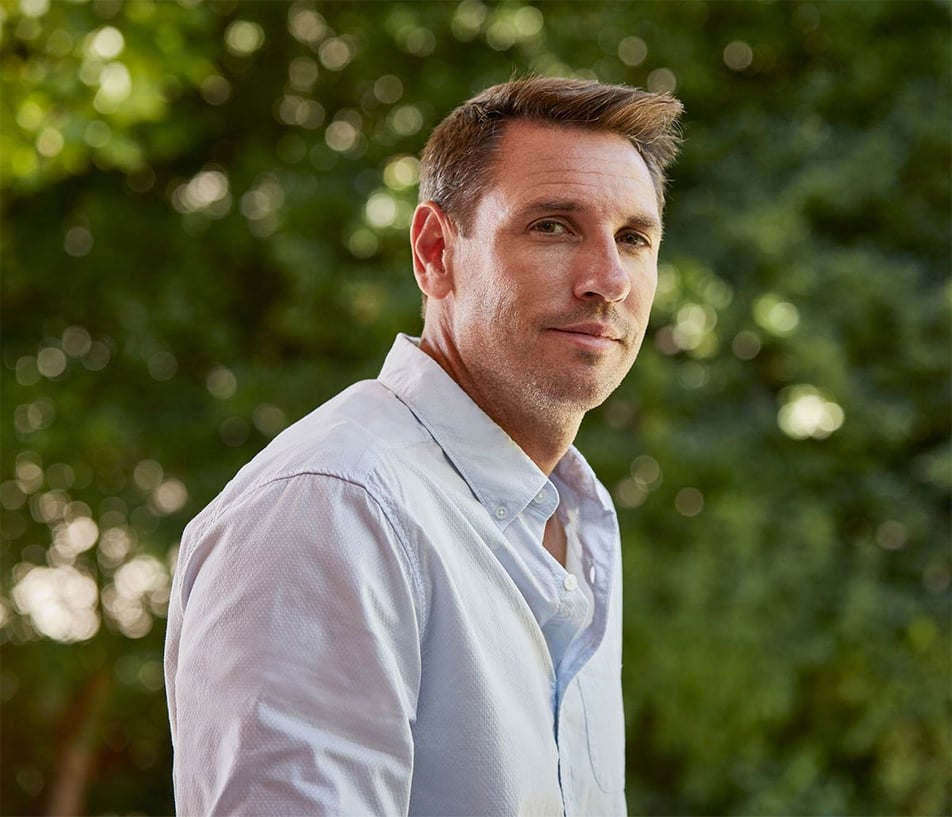

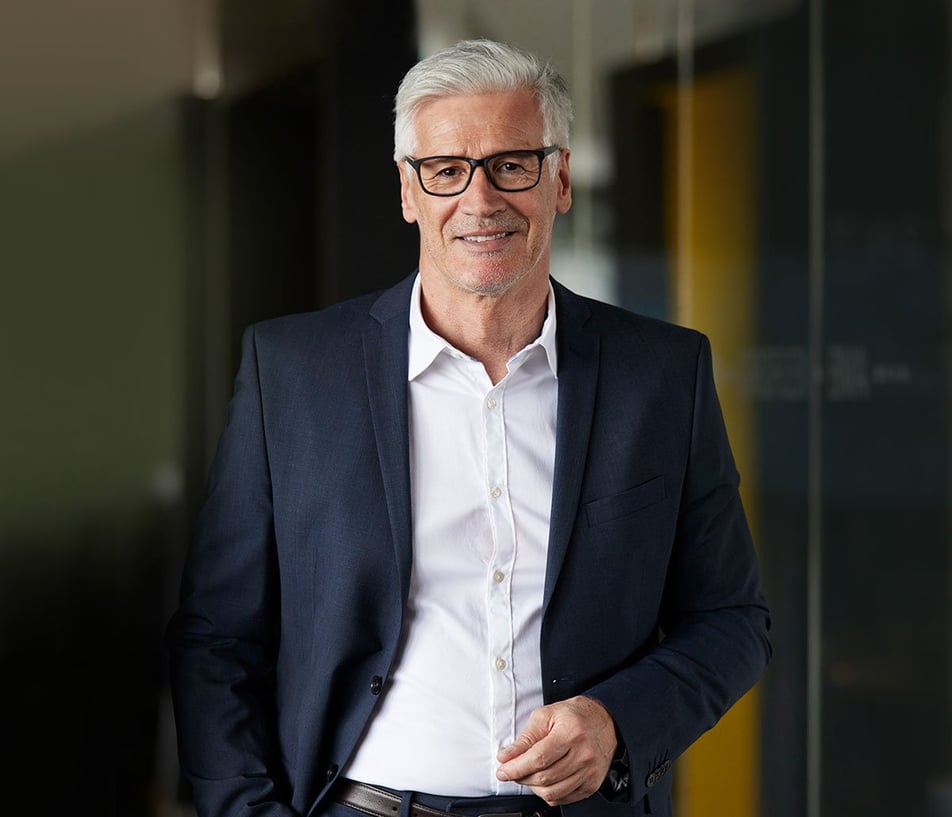

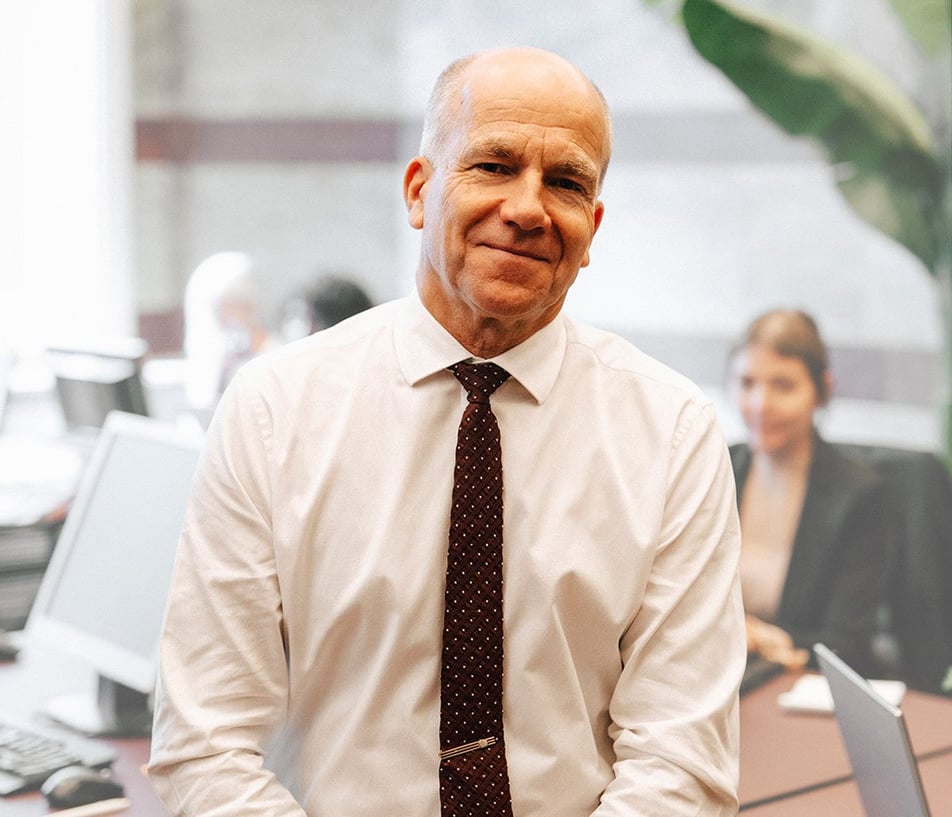
.png?width=400&height=400&name=CT-How_Can_We_Help-22_july_NewGraphic_b(small).png)

.png?width=1386&height=1224&name=2025%20Legal500%20Elite%20Boutique%20Award%20(Badge).png)
.png?width=1386&height=1224&name=ITR%20Finalist%20Practice%20Leader%20of%20Year%20Peter%20Aprile%202024%20(Badge).png)
.png?width=1386&height=1224&name=2025%20Legal500%20Leading%20Firm%20Client%20Satisfaction%20Award%20(Badge).png)
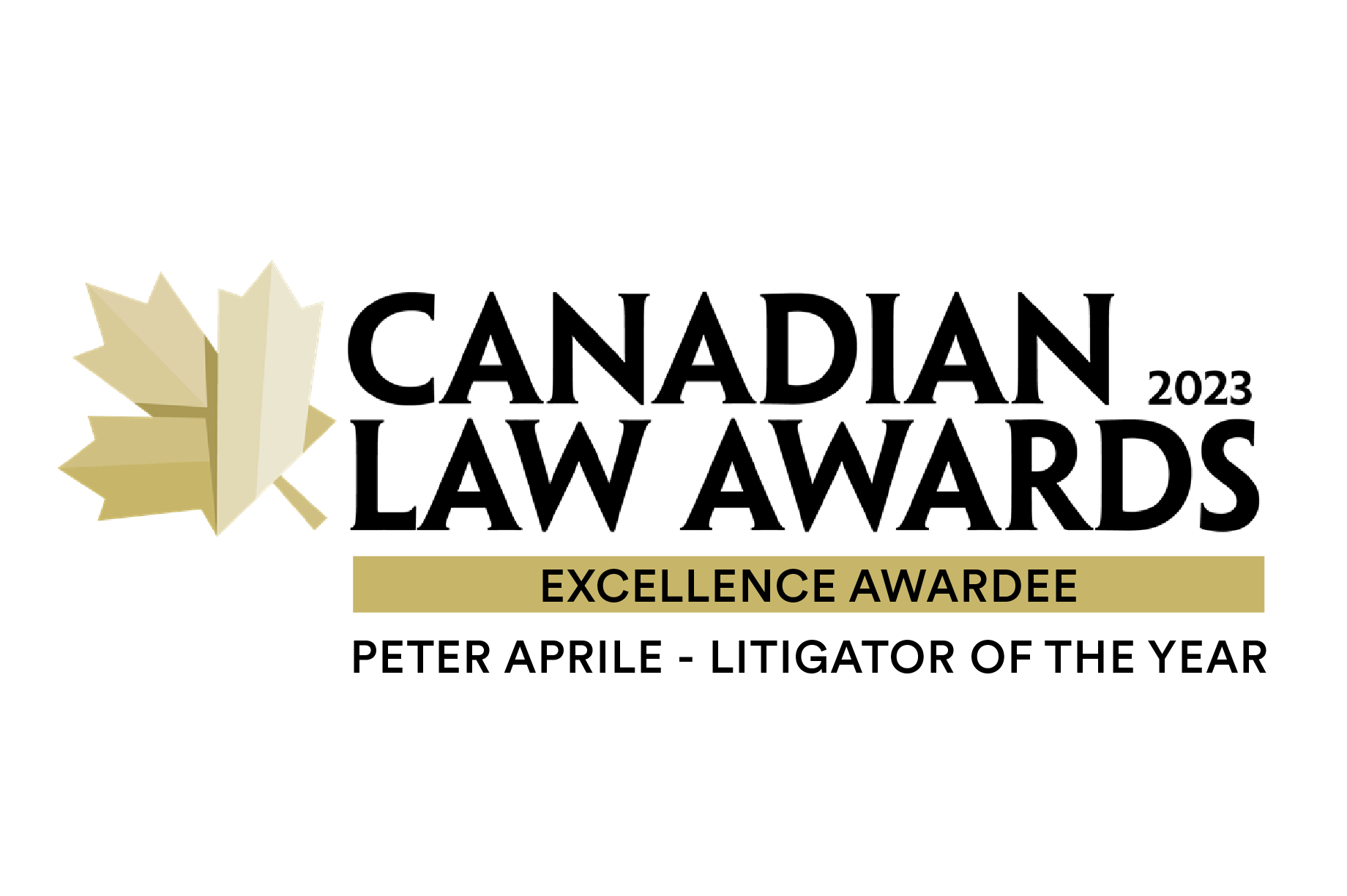
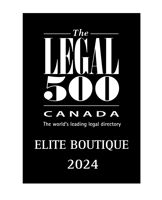

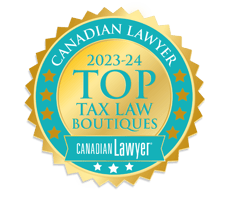
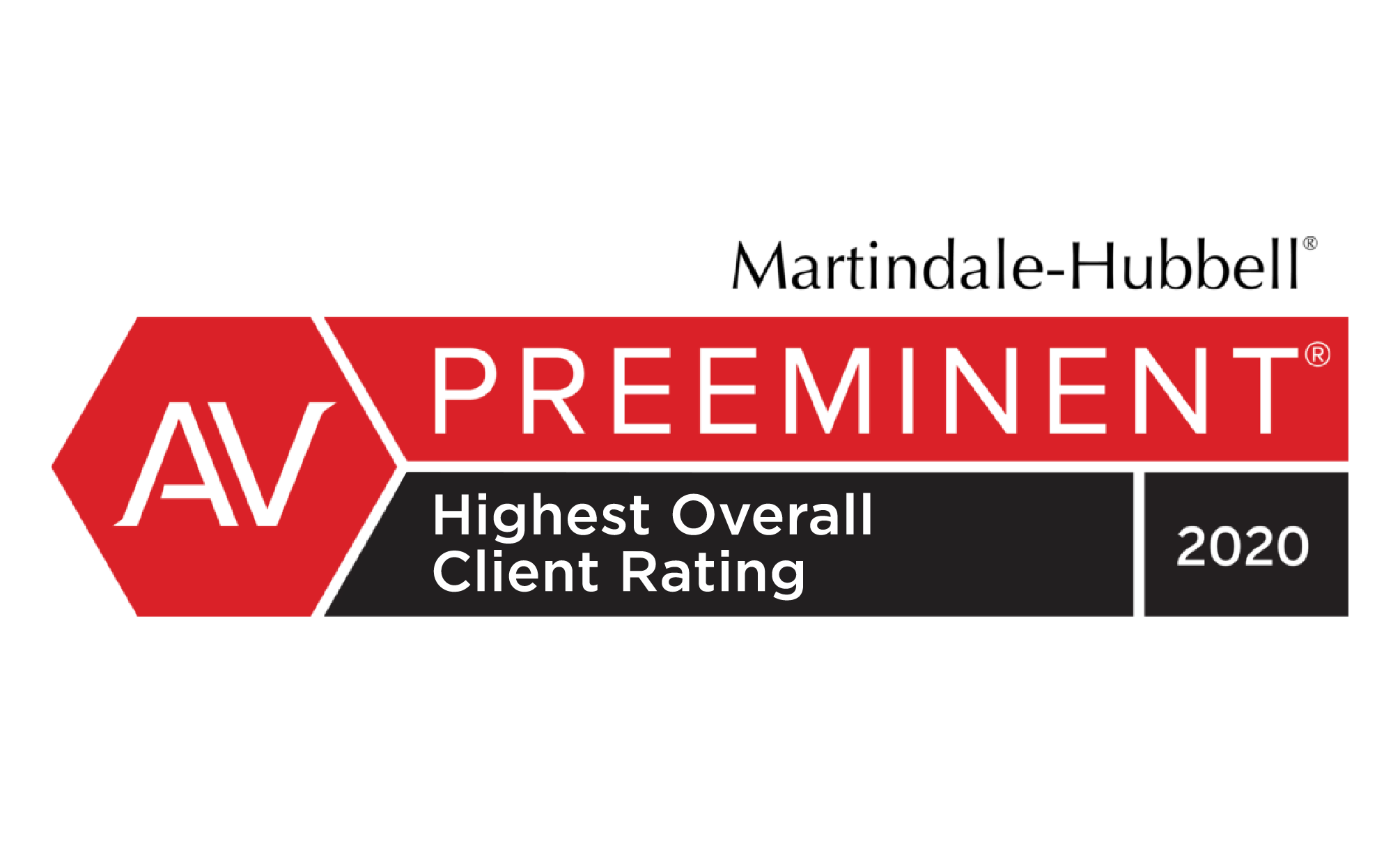
.png?width=1386&height=1224&name=ITR%20Tax%20Innovator%20Finalist%202024%20Award%20(Badge).png)

